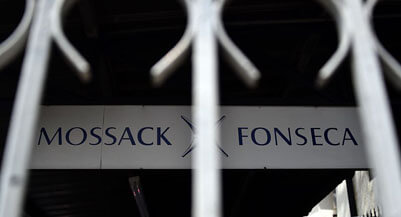What Canadians can learn from the Panama Papers
Here are 3 tax schemes to avoid and 6 legit ways to avoid paying tax
Advertisement
Here are 3 tax schemes to avoid and 6 legit ways to avoid paying tax

Tax profit as income or capital gains? » Capital gains explained » Can you avoid capital gains tax? » How to pay less capital gains tax »
No. 3. Tax-free trusts. Up until a decade ago, smart investors could get juicy tax-free returns of 8% to 12% by investing in income trusts. But in October 2006, the government suddenly announced that income trusts would be taxed and the value of these trusts plunged overnight. But that doesn’t mean you still can’t take advantage of income trusts. Even with the income trust tax, some trusts are still yielding 7%. If you decide to include income trusts in your retirement portfolio, Dan Hallett, vice-president at HighView Asset Management in Oakville, Ont., suggests that you keep them outside your RRSP. That way you can apply the dividend tax credit to the income they provide. If income trusts are held inside your RRSP, the income you get is taxed at the regular income tax rate when it is withdrawn.Capital gains tax: Declaring a new principal residence » Use the principal residence exemption to save on taxes »
No. 4. Use legit tax shelters. Of all the ways to thwart the tax man, the easiest and most effective way is to use two legit tax shelters: the RRSP and TFSA. The RRSP lets you defer paying taxes on a portion of your yearly income (the amount you contribute to your RRSP) and give you a tax rebate in the year you make the contribution. These contributions then grow, tax-free, so you don’t have to pay income, dividend, interest or capital gains tax regardless of how much your investments earn in your RRSP. When you finally withdraw the money, you’ll have to pay tax, but for most Canadians they’ll end up paying less tax because their income in retirement is less than during their working years, putting them in a lower marginal tax bracket. TFSAs are similar to RRSPs in that contributions put into these accounts grow tax-free. Unlike the RRSP, TFSA contributions earn no up-front tax refund, but the government doesn’t get a dime of your money when funds are withdrawn. No. 5. Harvest tax losses. Another way affluent investors can smooth out their tax hit is to use their losses and gains in the stock market strategically. When investors harvest an investment loss—by selling the tanking stock—they can apply that loss against gains in that same tax year as well as any gains in subsequent tax years, so they end up paying less tax overall. To learn more, read our article on the Secrets of the rich. No. 6. Use life insurance. If you die at a ripe old age, you’re not likely to have dependents who are still relying on your income but that doesn’t mean your family won’t face big expenses when you die. For example, if you own rental property, you can’t pass it to your children tax-free; your estate will be on the hook for capital gains taxes, whether or not your heirs sell the real estate. The same applies to investment portfolio, RRSPs and RRIFs. Truth is, once you and your partner have died, the final tax bill on your estate can also be enormous. That’s because once both of you die, the RRSP and RRIF investments are fully taxable in the year of death. Depending on your province, that means up to 53% of your nest egg will go to the government instead of your children, grandchildren or charity. As part of a comprehensive estate plan, you might consider a permanent life policy with a death benefit designed to offset all or part of your final expenses, including the final tax bill. The premiums can be very high if you don’t get the coverage until late in life, but the payout is guaranteed. If you know you won’t need the cash while you’re alive, it may be the best way to keep your wealth in the family. For more see our article on using life insurance to thwart the final tax bill. Finally, for those of us that fall on the chore side of the tax paying equation, take heart. You don’t have to do a lot to shave the amount of tax you pay on your investment returns. For a great primer on what to keep in a tax sheltered investment, such as an RRSP or TFSA, and what to leave in unregistered (not tax sheltered) accounts, see our previously published article, Asset Location: Everything in its place. Sources: Associated Press, Investopedia, MoneySense, Rob GerlsbeckShare this article Share on Facebook Share on Twitter Share on Linkedin Share on Reddit Share on Email